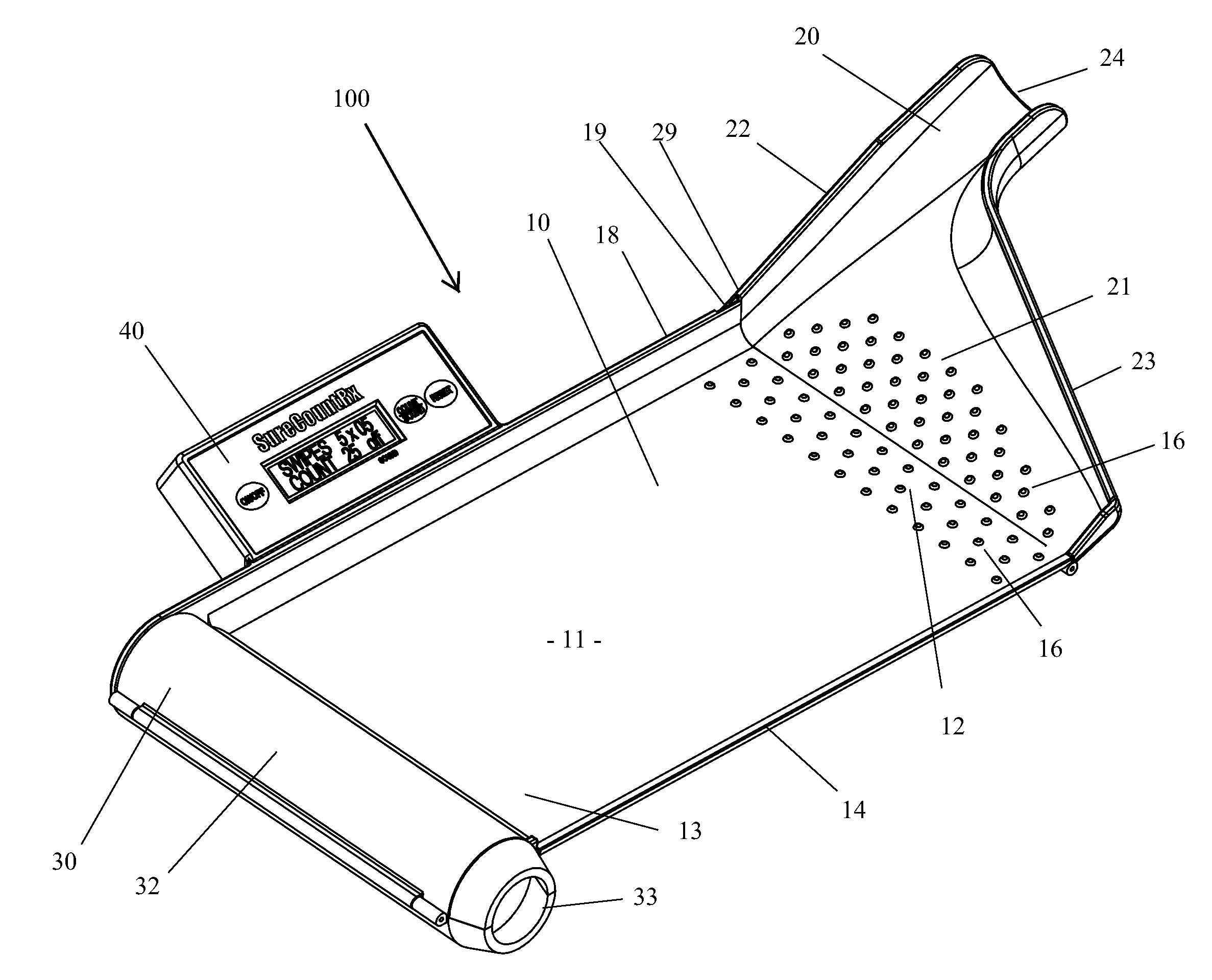There are a number of problems associated with the standard pill counting tray.
Unfortunately this means that pills commonly collect and often bunch up or layer one on top of another.
This makes accurate counting difficult until you evenly spread the pills out into a single layer, which can
delay the start of a
technician's count and increase the patient's wait time for the medication.
Another common problem that occurs is when pouring excess pills back into the stock
bottle, they tend to flow out all at once.
This causes the pills to spill onto the countertop and / or floor, and the medication becomes contaminated.
Employees touching the pills add to further medication
contamination.
All this also slows down the dispensing of
medicine to the patient, and increases the likelihood that the medication they receive is unsanitary.
Another common problem occurs when pouring pills from the stock
bottle onto the standard counting trays.
If too many pills are poured, or are poured too quickly, it is common for the pills to quickly fill up the available space on the counting surface and run out the return spout and onto the countertop or on to the floor, causing
contamination of the
medicine.
This type of error is not only unsanitary, but it also slows down dispensing time as employees have to address and rectify the spill.
This also adds to the cost to the
pharmacy as damaged and contaminated pills are discarded.
Another problem is that when returning pills in current model counting trays to the stock bottle, tilting the tray too rapidly or at too steep of an angle will result in some or all of the pills spilling out of the return spout.
Or, if the pills are poured
too slowly, they will clump and block the return spout.
This is because the standard return spout is not made for high volume pill flow.
There are two common problems encountered with counting the pills on the standard pill tray.
The first is that it is easy to lose count.
Technicians waste time and decrease business productivity when they have to recount pill quantities.
These distractions can cause the
technician to loose count, and to have to return pills to the counting surface and resume the count.
This problem is exacerbated by the fact that it is increasingly common to prescribe some pills in large quantities, some times over 500 pills to a bottle.
This makes counting more difficult.
Another problem, though less common, is that manual counting can allow someone in the
pharmacy to steal medication.
In some instances (particularly with valuable narcotics) these pills can be stolen by unscrupulous employees.
However this method has numerous issues and potential risks.
Unfortunately it is not uncommon that stock bottles are sealed and shipped with fewer pills than the advertised bottle quantity, which can leave both the
pharmacy and patient short on
medicine.
Stock bottles also commonly contain either crushed or broken pills, because no employees have verified the contents of the bottle before it is shipped.
Also it is common for a
desiccant, which is used as a
preservative and to absorb
moisture, to be present in the stock bottle, and it is not uncommon for a
desiccant to be inadvertently placed in the prescription sized bottles.
The
desiccant is a dangerous
choking hazards for children and elderly
dementia patients once the bottle has been opened.
This type of
ingestion can cause severe poisoning.
It's clear that the risks and disadvantages associated with dispensing stock bottles outweigh any potential benefits.
The weight based machines count by weight, and do not distinguish between a whole or broken pills.
There is a similar problem with the
laser counters.
This significantly degrades the efficiency of
machine counting methods.
The other problem associated with
machine counters is the cost.
 Login to View More
Login to View More  Login to View More
Login to View More 


